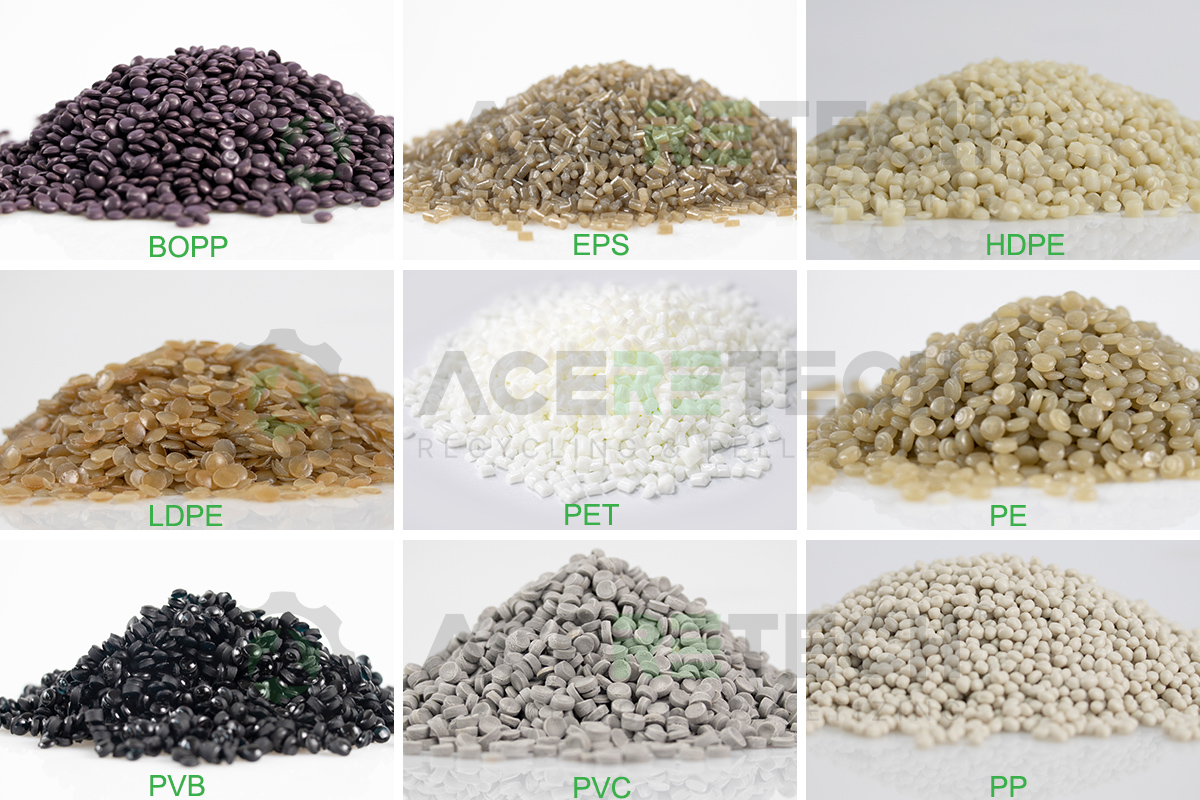Article Sections
Ⅰ. What is a Plastic Pelletizing machine?
II. What Plastics are Primarily Suitable for Pelletizing?
III. What are the Benefits of Using a Plastic Pelletizing machine?
Amidst increasing resource scarcity and environmental pressure, the recycling and reuse of plastics has become crucial. Plastic pelletizing machines are essential and crucial equipment in this process. Like a magical "magician," they transform discarded plastics into valuable resources, giving them new life.
Ⅰ. What is a Plastic Pelletizing machine?
A plastic pelletizing machine is a machine designed to extrude, cool, and cut molten plastic material through a specialized die, ultimately forming regularly shaped pellets. Its basic operating principle is: Crushed, cleaned, and dried plastic material (usually waste or recycled plastic) is fed into the machine's hopper. The rotating screw gradually conveys the plastic forward, where it melts and plasticizes under the heat generated by the external heating of the barrel and the shear friction of the screw. Under pressure, the molten plastic is pushed through a specially shaped die (orifice) inside the die head, forming continuous strands. These strands are quickly cooled and shaped by a water ring, water trough, or air cooling system. Finally, a cutting device cuts them into uniform small particles, commonly known as plastic pellets.
II. What Plastics Are Primarily Suitable for Pelletizing?
Plastic pelletizers are suitable for a wide range of applications, covering nearly all common thermoplastics. These include:
Polyethylene (PE): such as high-density polyethylene (HDPE, commonly found in plastic barrels and bottle caps), low-density polyethylene (LDPE, commonly found in plastic film and hoses), and linear low-density polyethylene (LLDPE, also used in film, etc.). Recycled PE can be pelletized and used to make plastic bags, agricultural films, pipes, turnover boxes, etc.
Polypropylene (PP): Commonly found in plastic containers, woven bags, and automotive parts. Recycled PP pelletized can be used to make recycled plastic products such as trash cans, seats, and toys. Polyvinyl chloride (PVC): Used in pipes, door and window profiles, and wire and cable sheathing. Recycling PVC into pellets requires special attention to removing additives such as stabilizers. Recycled material is primarily used in less demanding applications, such as flooring and low-end pipes.
Polystyrene (PS): For example, expanded polystyrene (EPS, commonly known as foam plastic, is used in packaging and insulation materials. Recycled PS can be pelletized for use in stationery, toys, building panels, and other products.
ABS plastic: Commonly used in electronic and appliance housings and toys, recycled ABS pelletized into pellets can partially replace virgin ABS in the manufacture of less demanding products.
In addition, materials such as PET (beverage bottles), PVC (rigid sheet), and PA (nylon) can also be processed through the corresponding pelletizing processes. It's important to note that different types of plastics have different properties, such as melting points, viscosities, and additives. The appropriate pelletizer model and process parameters are typically selected based on the type and characteristics of the plastic. Sometimes, even plastics of the same type must be recycled and pelletized separately to ensure the quality and performance of the recycled pellets.
III. What are the benefits of using a plastic pelletizer?
Using a plastic pelletizing machine for plastic recycling offers significant benefits in many areas:
Resource Conservation and Recycling: This is the core advantage. Plastic pelletizing converts waste plastic, which would otherwise be landfilled or incinerated, into reusable plastic pellets. These recycled pellets can be used as raw materials, partially or completely replacing virgin plastic, in the production of new plastic products. This significantly reduces dependence on virgin resources like oil, enabling the recycling of plastic resources and aligning with the concept of sustainable development.
Environmental Protection: Waste plastic is a major source of "white pollution," causing serious harm to soil, water, and the ecological environment, particularly marine life. Pelletizing recycling reduces waste plastic emissions, alleviates the burden of waste disposal, effectively curbs the spread of plastic pollution, and protects the environment we depend on.
Significant Economic Benefits: The production cost of recycled plastic pellets is typically much lower than that of virgin plastic. For plastic product manufacturers, using recycled pellets can significantly reduce raw material costs and improve product competitiveness. Furthermore, plastic pelletizing has become an independent industry in itself, generating economic benefits for recycling companies and creating jobs. Reduced Energy Consumption: The energy required to produce recycled plastic pellets is far less than that required to extract and synthesize virgin plastic from petroleum. Statistics show that using recycled plastic to manufacture products can save significant energy. This is not only economically viable but also reduces carbon emissions and other pollutants associated with energy production (such as coal-fired power generation).
Promoting Industrial Upgrading: The development of the plastic recycling and pelletizing industry has driven advancements in related technologies, such as sorting, cleaning, and modification. High-quality recycled plastic pellets can meet the needs of a wider range of applications, promoting green upgrades and high-quality development across the entire plastics industry chain.
In short, a plastic pelletizer is more than just a machine; it serves as a bridge between plastic waste and renewable resources, a key component in achieving a circular economy for plastics. Its widespread use not only brings economic benefits to businesses and individuals, but also contributes significantly to protecting our planet and achieving sustainable development. With continued technological advancement, the application prospects of plastic pelletizing will continue to expand.
Plastic Pelletizing Machine: Opening a New Chapter in Plastic Resource Recycling
2025/08/22